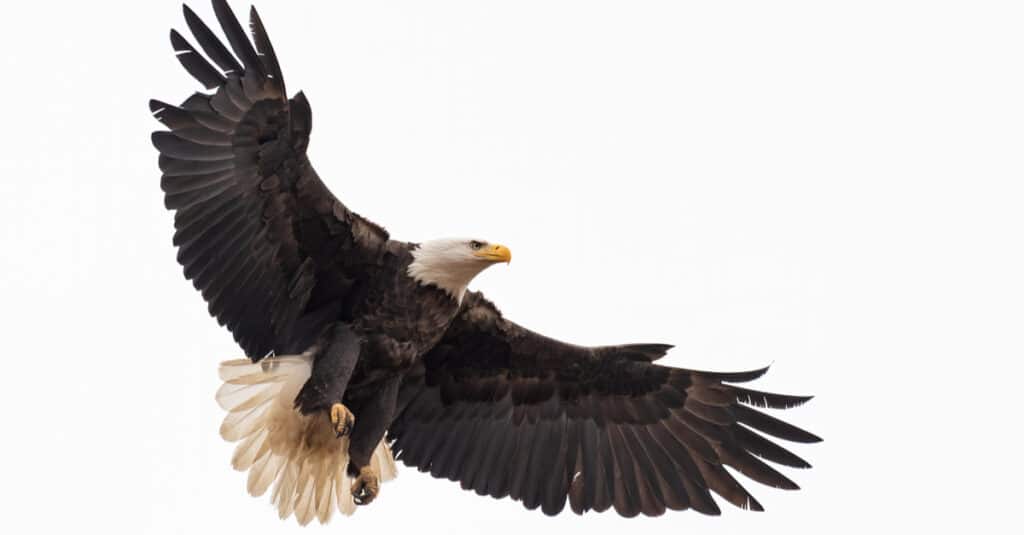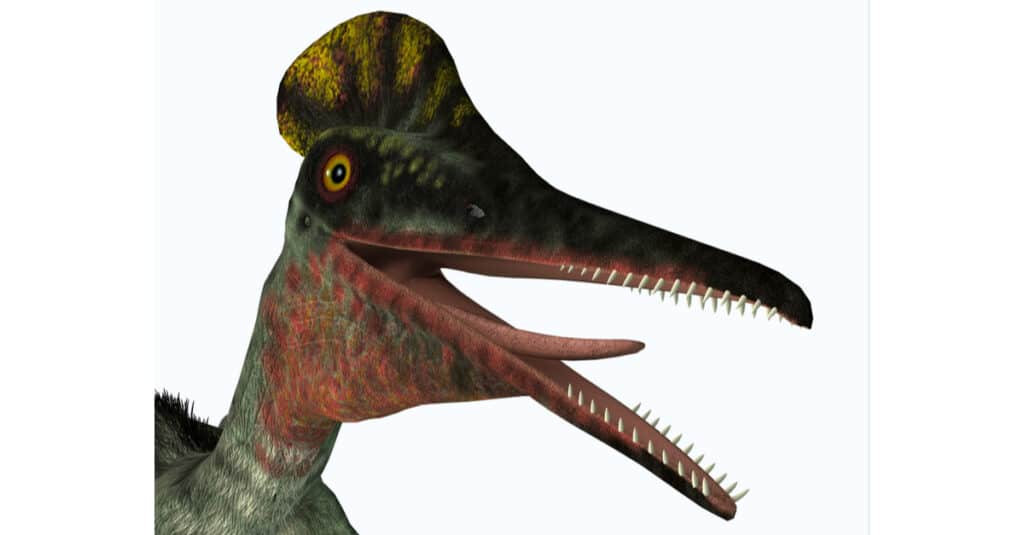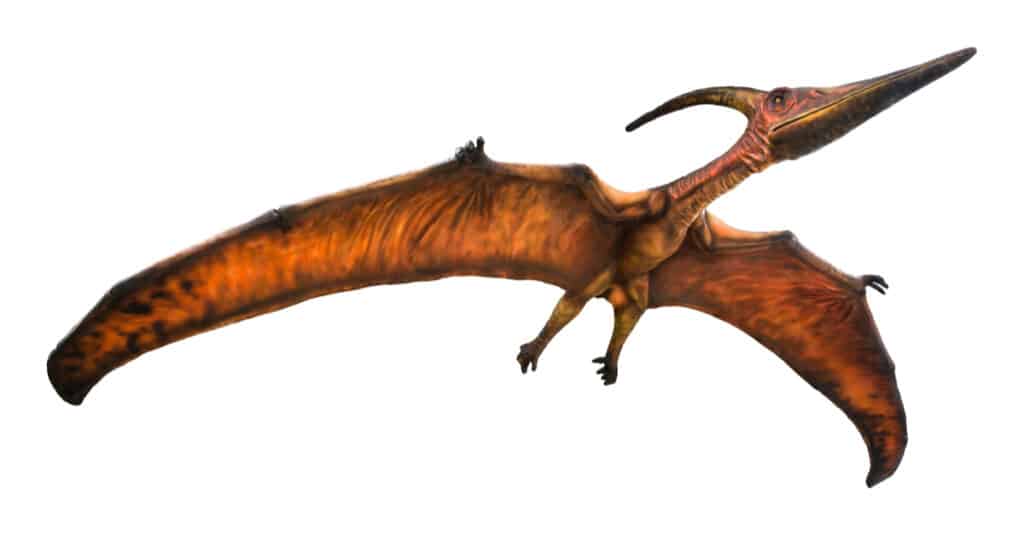In the battle of the flying creatures, there’s no doubt that modern eagles and other raptors reign supreme. These apex predators are some of the coolest flying animals to ever live and hunt fish, small mammals, and even snakes from a mile high in the sky! When we compare them to the ancient predators of the past, however, how do they stack up? We are going to be looking at one of the most formidable birds today, the bald eagle, and seeing how it would fare against a beast from a bygone era, the Pterodactyl. Bald eagle vs. Pterodactyl: Which flying predator would win in a fight? Let’s find out!
Setting the Stage (Ground Rules)
Before we get into the fight, it’s important to understand our contenders.
Generally speaking, most people know what a bald eagle is, even if they’ve never seen one in real life. Bald eagles are some of the largest flying predators alive today and usually stand 3 feet tall with a wingspan of over 6.5 feet. Additionally, they have razor-sharp talons that have the power to instantly kill animals like fish, rabbits, and even small deer!
On the other hand, no one has seen a Pterodactyl. For the purposes of this fight, we are going to have to make some estimations and assumptions. First, it’s important to know that pterodactyls aren’t actually a single species, but an informal name for pterosaurs, the flying reptiles from the age of the dinosaurs. The name comes from the Pterodactylus genus, and most people just refer to any flying reptile with leathery wings and a long, pointed face as a pterodactyl. For our purposes, we will be using the first pterosaur to ever be named, the Pterodactylus antiquus. This flying reptile is the reason why people associate the name pterodactyl with all pterosaurs and was humanity’s first real discovery of these strange creatures.
Now that we understand our combatants, let’s set some ground rules:
- The fight is to the death.
- The setting will take place in the air, and both creatures will be flying at the start.
- The creatures will use any and all advantages available to them.
- There is no escape, even though that is the most likely scenario if an actual interaction were to happen in real life.
Let’s get started!
Bald Eagle vs. Pterodactyl: Size
Bald eagles are among the largest raptors around today. Females are usually 25% larger than males and can easily weigh up to 15 lbs. Females usually stand around 2-3 feet tall, with the larger individuals having a wingspan that can reach 8 feet across. Although they aren’t the largest flying birds in the world, they are among the largest of all predatory birds.
Pterodactylus antiquus was probably a lot smaller than most people realize. There are a lot of other pterosaurs that grew much larger, but the original pterodactyl and the only one that sports the name “pterodactyl” was pretty small. On average, they had a wingspan of around 3.5 feet, about half that of the bald eagle.
Winner: Bald Eagle

A bald eagle’s wingspan can reach 8 feet across!
©Randy G. Lubischer/Shutterstock.com
Bald Eagle vs. Pterodactyl: Teeth and Talons
Bald eagles have two main attacking weapons: their beak and their talons. The beak is quite sharp and ends in a distinct hook, allowing them to tear flesh when needed. Although their beak is formidable, their real strength as a predator comes from their talons. A bald eagle’s talons are able to exert about 10x the grip strength of an adult human, with all of that pressure ending on the point of their 2-inch talons. When attacking, the bald eagle will open its feet, exposing the talons outward. When they make contact, the talons will snap shut, slicing and gripping the prey with all eight talons (four on each foot). For smaller mammals, this usually results in instant death.
Pterodactylus antiquus was a carnivore as well, only it had a slightly different strategy. Most of the strength of Pterodactylus antiquus was concentrated in its mouth, not its feet and talons. Pterodactylus antiquus fossils show that they had mouths filled with 90 narrow and sharp teeth that were larger at the front and narrow further back. Based on the skull size, researchers estimate that Pterodactylus antiquus had a very strong bite force, mostly to help them eat invertebrates.

Pterodactyls had short, spiky teeth and a somewhat narrow, long jaw.
©Catmando/Shutterstock.com
Winner: Tie
Bald Eagle vs. Pterodactyl: Speed
Birds today are incredibly nimble, even the larger birds of prey like the bald eagle. When diving, a bald eagle can reach speeds of 75-99 mph. When soaring, they are able to reach speeds of around 30 mph for extended periods of time. In a straight line, a bald eagle is able to achieve small bursts of powered flight at around 75 mph. Additionally, bald eagles are extremely quick and can twist, turn, and are overall extremely acrobatic in the air.
There isn’t a lot of data surrounding Pterodactylus antiquus‘ speed, but it likely wasn’t very fast. Most pterosaurs had very fragile bodies and had built-in mechanisms to help them stay slow while they were flying in order to reduce their potential for injury, especially when landing. The largest of all pterosaurs could have reached up to 67 mph when diving or 56 mph when soaring, but Pterodactylus antiquus wasn’t among the largest pterosaurs.

When soaring, bald eagles are able to reach speeds of around 30 mph for extended periods of time.
©Jack Molan/Shutterstock.com
Winner: Bald Eagle
Bald Eagle vs. Pterodactyl: Special Adaptations
The bald eagle has a few special adaptations that may help it in a battle. Bald eagles are known to have some of the best eyesight in the entire world. It’s very likely that a bald eagle would spot Pterodactylus antiquus first, giving it a big advantage in terms of the element of surprise. Additionally, modern birds are probably much more nimble flyers, which would allow the eagle to out-maneuver the Pterodactylus in many instances.
Pterodactylus antiquus‘ major adaptation is its strength and its forelimbs. Models of pterosaur fossils show that they were likely quite strong and had higher muscle densities than previously thought. Additionally, they would have had forelimbs with small claws on the end, allowing it to grab or hang onto things.

Pterodactyls had forelimbs with small claws on the end, allowing it to grab prey.
©YuRi Photolife/Shutterstock.com
Winner: Bald Eagle
Bald Eagle vs. Pterodactyl: Final Result
Overall, we have to give the battle to the bald eagle. Although the traditional “image” of the pterodactyl is formidable, it simply isn’t the case based on recent research. The bald eagle is larger, likely more intelligent, capable of faster and nimbler flight, and would have the element of surprise on Pterodactylus antiquus. While Pterodactylus antiquus would put up a fight, it simply doesn’t have the tools to fight a fully-grown bald eagle in aerial combat.
Overall Winner: the Bald Eagle
The photo featured at the top of this post is © Chris Hill/Shutterstock.com
Thank you for reading! Have some feedback for us? Contact the AZ Animals editorial team.






